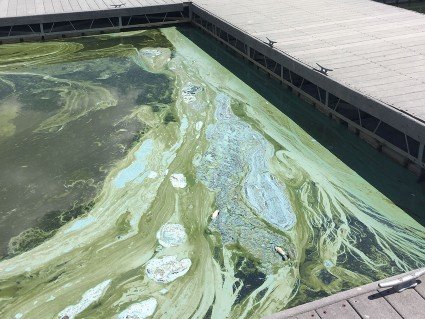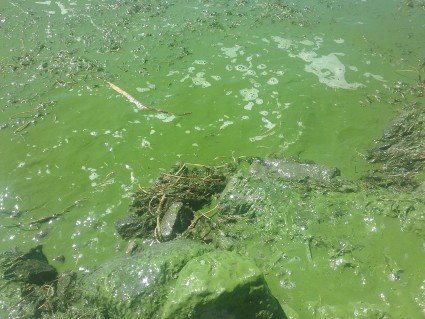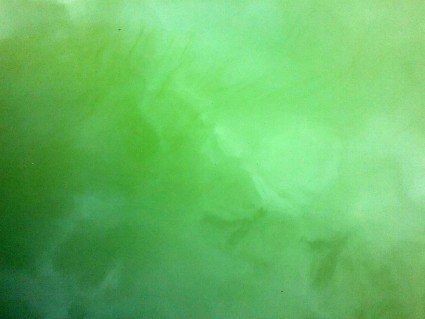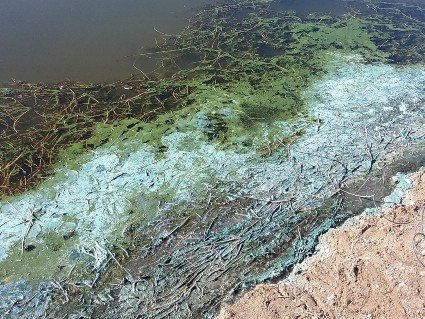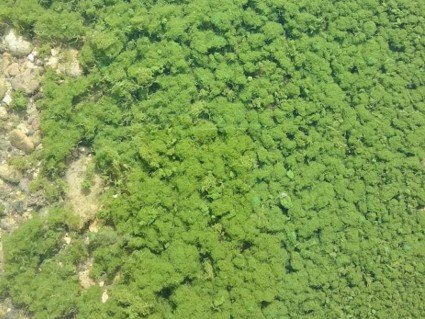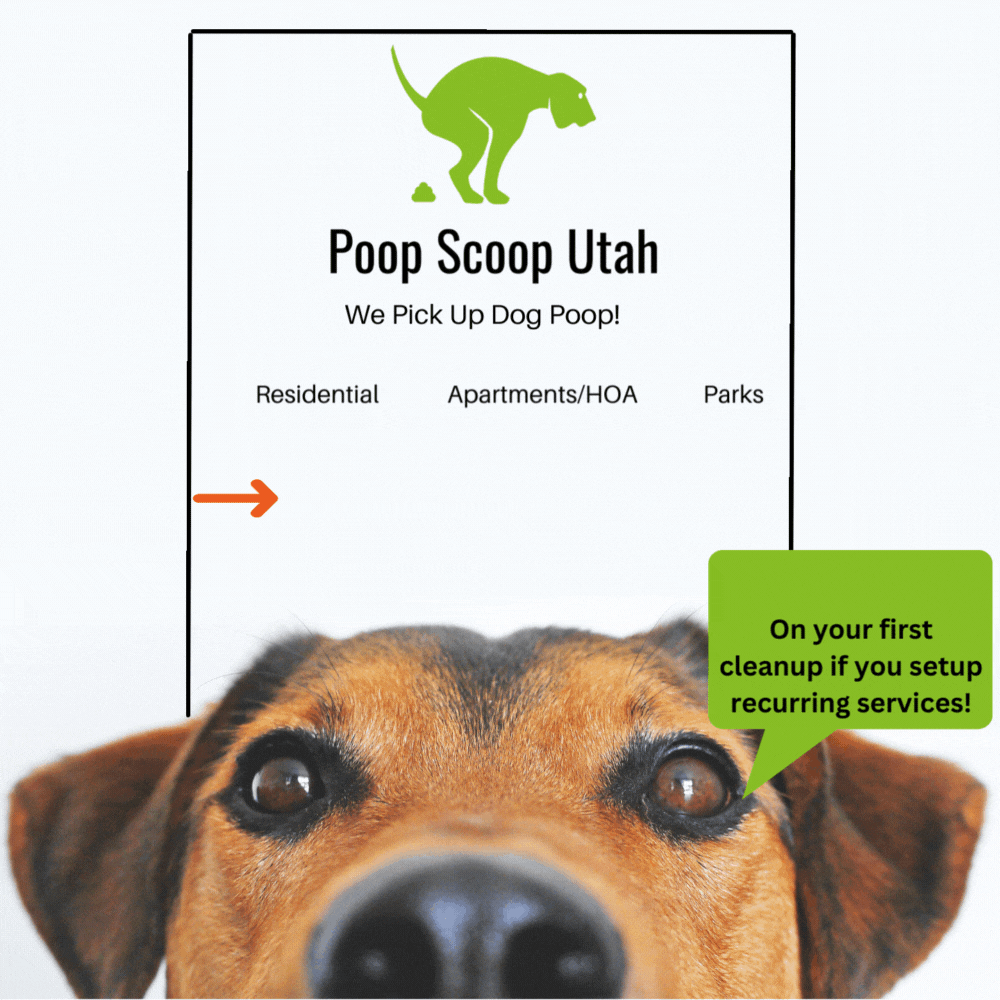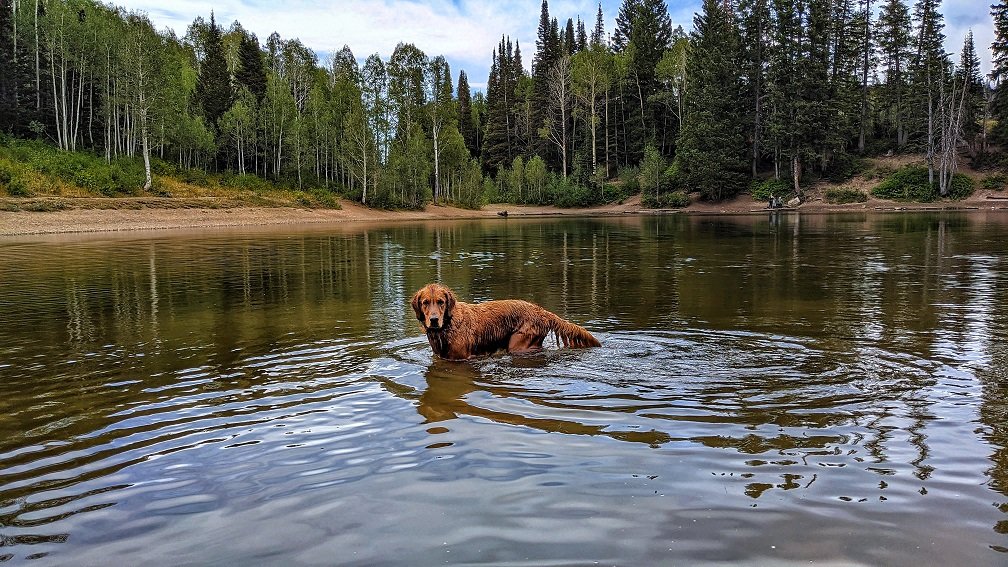
This article is written in partnership with Mountain West Veterinary Specialists.
As the temperature continues to rise each summer, you and your dog are probably looking forward to visiting many of Utah’s lakes and ponds to cool off, but there is one thing you should be aware of first – Utah’s toxic algal blooms.
If you’ve lived in Utah for a while, you’ve probably heard people reference algae blooms and that they are harmful to pets. But, what are they? Where are they? And what should you do if your dog comes into contact with a potentially harmful algae bloom? We will answer all of those questions and have you ready to go on your next adventure in this post.
Dog Lake in Millcreek Canyon
Utah’s Algal Blooms
Sometimes people refer to the blooms as “algae blooms”, “blue-green algae”, or “harmful algae blooms”. In reality, it’s not actually algae, it’s cyanobacteria that produce cyanotoxins.
So, What is an Algal Bloom?
According to Utah’s Department of Environmental Quality, these algal blooms are actually cyanobacteria, which are naturally occurring but become dangerous when they multiply too quickly creating visible colonies or blooms. The blooms then produce cyanotoxins, which pose serious health risks to both humans and animals if ingested.
How To Spot An Algal Bloom
A toxic algal bloom can appear in various shades of green or blue. They can look like scum, foam or mats, but they can also look like spilled paint or grass clippings. If you notice anything green and algae-like in the water, it is probably best to keep your dog away.
It’s also important to know that the blooms aren’t always on the surface, they can occur at various depths and move throughout the water.
Here are some photos that can help you learn to recognize a bloom.
Photos courtesy of Utah DEQ
The Department Of Environmental Quality monitors some (but not all) bodies of water. You can find the map here.
Where In Utah Can You Find Toxic Blooms?
If there is standing or slow-moving water, it’s possible there could be toxic algal bloom. A common misconception is that the blooms don’t occur at higher elevations (like in the High Uintas) but that’s not true, they can occur almost anywhere if the conditions are right.
Conditions for a toxic bloom generally happen in late summer or early fall, they include:
-
High nutrient levels, particularly phosphorus
-
Abundant sunlight
-
Warm water temperatures
-
Stagnant or slow-moving water
Knowing when and for how long these conditions have been present and being able to recognize a blue/green algae bloom are the most important tools to keep you and your dog safe.
Protecting Your Dog From Algal Blooms
You’ve already taken the first step to keeping your dog safe, and that’s learning how to recognize an algal bloom.
Next, if you suspect a bloom or notice any signs keep your dog away from the water. You can also check the map before heading out on your adventure.
For extra safety, consider purchasing an on-site test kit so you can test suspicious bodies of water prior to your pet swimming. 5Strands’ BlueGreen Test offers 99% accuracy for only $35. Add one to your hiking pack or car! Use code dogfriendlyslc to save 10% on your test kit.
Worried about algae blooms? Test any body of water right on site for 99% accurate results.
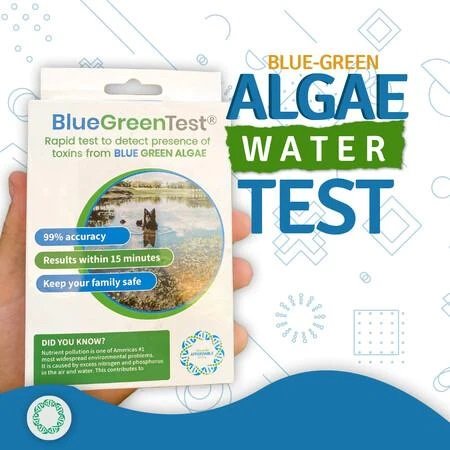
And just in case, keep plenty of towels and extra fresh water in your car for washing your dog off.
What To Do If Your Dog Swims In An Algal Bloom?
First, rinse them off with fresh water immediately and get a full bath as quickly as you can. Here’s a list of DIY dog washes around Salt Lake City.
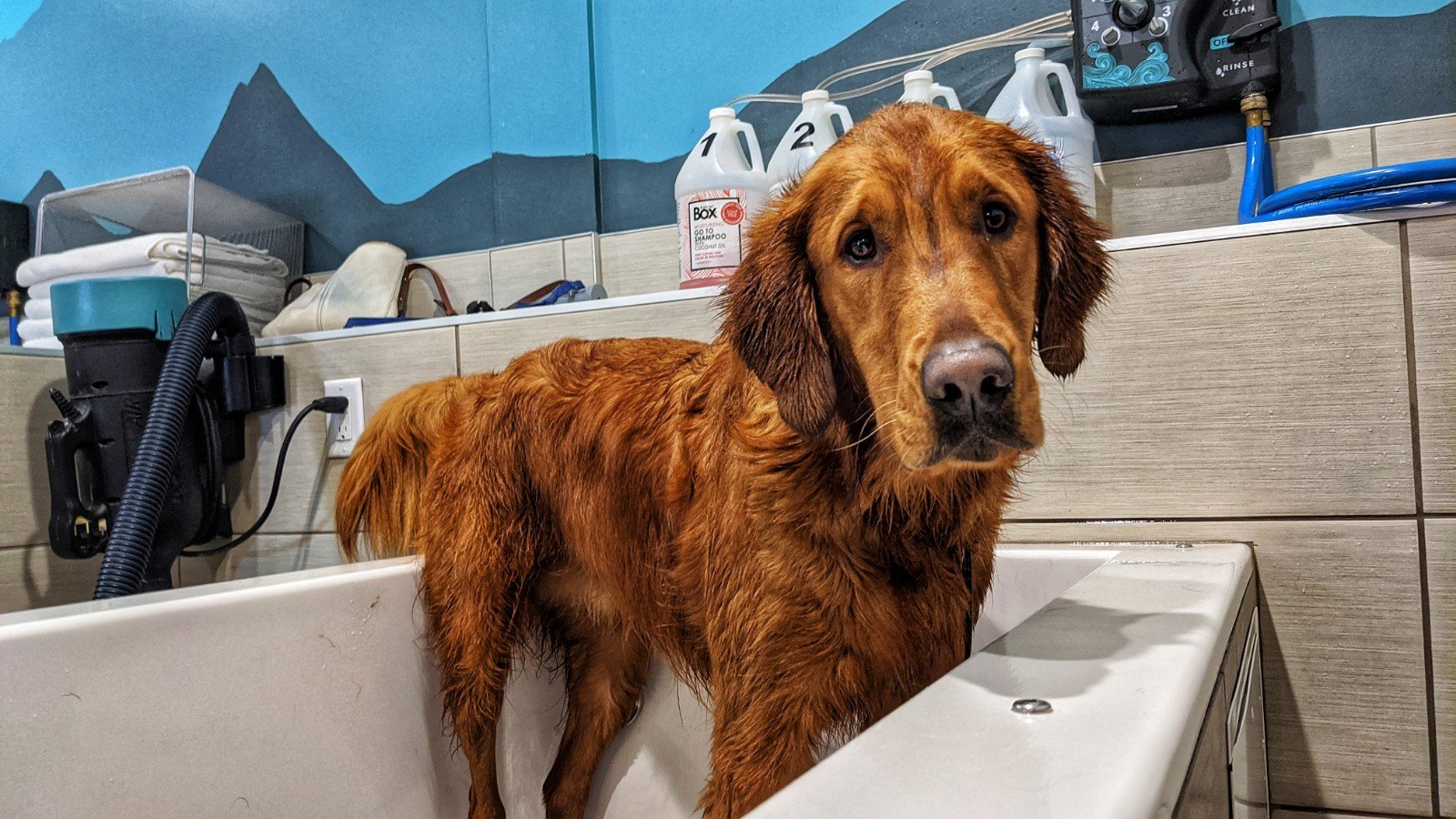
If you have time, take a photo of the water so you can show your vet if you need to.
Watch your dog for signs of distress. According to Mountain West Veterinary Specialists, signs of sickness from the bloom can occur anywhere between 15 minutes to a few days after exposure.
Signs of distress include:
-
Lethargy
-
Vomiting
-
Diarrhea
-
Depression
-
Weakness
-
Pale Gums
-
Tremors/Seizure Activity
-
Muscle and respiratory paralysis
If you suspect your dog may have ingested any of the toxins from an algal bloom, Mountain West advises contacting poison control at 1-888-426-4435 or your vet as soon as possible.
Mountain West Veterinary Specialists has a 24-hour pet emergency room if you ever find your pet in need.
Overall, it is important to be vigilant in knowing the conditions that could cause a toxic algal bloom and knowing how to spot them so that you can keep your dog far away. If you’re looking to take your dog swimming, check our list of dog-friendly lakes and reservoirs near Salt Lake City.

This post may contain affiliate links which result in Dog Friendly SLC making a small commission. By shopping products we recommend, you ensure that we can keep finding dog friendly places in Salt Lake City and Utah. We appreciate your support!
This post may contain affiliate links which result in Dog Friendly SLC making a small commission. By shopping products we recommend, you ensure that we can keep finding dog friendly places in Salt Lake City and Utah. We appreciate your support!
